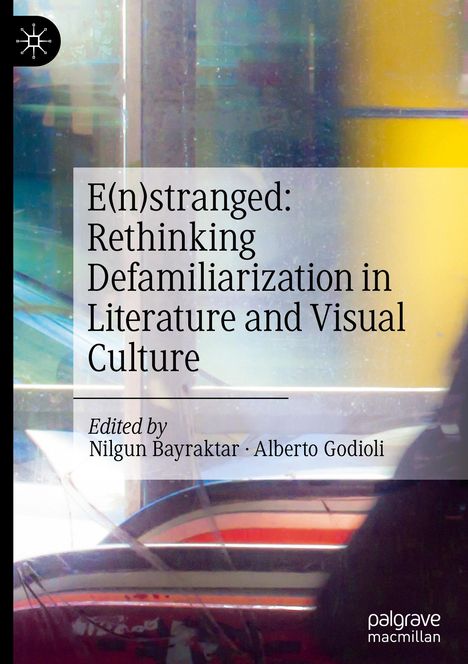E(n)stranged: Rethinking Defamiliarization in Literature and Visual Culture, Gebunden
E(n)stranged: Rethinking Defamiliarization in Literature and Visual Culture
(soweit verfügbar beim Lieferanten)
- Herausgeber:
- Nilgun Bayraktar, Alberto Godioli
- Verlag:
- Springer, 10/2024
- Einband:
- Gebunden, HC runder Rücken kaschiert
- Sprache:
- Englisch
- ISBN-13:
- 9783031608582
- Artikelnummer:
- 12041067
- Umfang:
- 320 Seiten
- Gewicht:
- 523 g
- Maße:
- 216 x 153 mm
- Stärke:
- 22 mm
- Erscheinungstermin:
- 25.10.2024
- Hinweis
-
Achtung: Artikel ist nicht in deutscher Sprache!
Weitere Ausgaben von E(n)stranged: Rethinking Defamiliarization in Literature and Visual Culture |
Preis |
|---|
Klappentext
Variously translated as "estrangement," "enstrangement" or "defamiliarization," Viktor Shklovsky's concept of ostranenie is more relevant than ever. This collection offers new insights into the theories and practices of ostranenie across various languages and cultures, with a particular focus on the 20th and 21st centuries. Our current era is marked by a dramatic redefinition of the normal and the strange, the familiar and the weird. The rise of far-right populism has increasingly normalized xenophobic and nativist stances previously confined to the fringes of the political spectrum. Additionally, the climate crisis has led to the ongoing renegotiation of the concepts of normalcy and emergency amid widespread efforts to adapt to the "new (ab)normal." Exploring defamiliarization provides a unique perspective to comprehend and question these processes and their profound cultural implications.
Focusing on ostranenie also offers valuable insights into how aesthetic forms serve a political function. Defamiliarization can take on various forms, including retro-futuristic dystopias, stylized films, and darkly humorous cartoons and memes. It can be an effective tool for political activation that relies on formal innovation rather than superficial emotional engagement.
This collection brings together the work of a group of scholars examining defamiliarization across different media. It explores questions such as: How can we differentiate between various forms of defamiliarization and analyze their effects on the reader / viewer? How is defamiliarization connected to the weird, the eerie, or the uncanny? As a result, the collection offers an updated theoretical framework for understanding the wide range of emergent artistic and literary practices of e(n)strangement in the current era and their significant political affordances.
Chapter 6 is available open access under a Creative Commons Attribution 4.0 International License via link. springer. com

